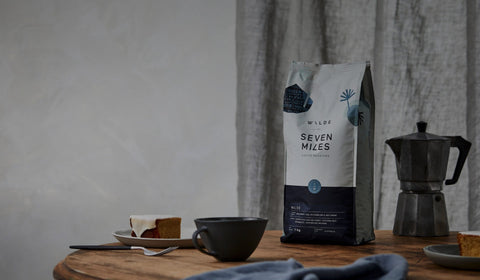So, you’ve decided to dive in and open your very own café. Opening a successful coffee shop can be a rewarding experience. Because of you, hundreds of friends will have great conversations. Because of you, mornings will be brighter and afternoons will seem less stressful. You’ll have more pull on society that you realise. All you have to do is get your coffee shop right... that’s easier said than done! This step-by-step guide to opening a café will help get you on the right track.
Checklist for Opening a Cafe
Get the checklist and other cafe business resources by email. Unsubscribe anytime.
Jump to a section in this article
1. Research the Coffee Business2. Define your Vision3. Create a Business Plan4. Choose a location5. Find the best suppliers6. Source commercial equipment7. Design your café8. Create a menu9. Hire the right people10. Market your café1. Research the coffee business

Opening a cafe takes a big investment in both time and money. It's essential that you spend time now understanding what it takes to run a successful cafe. This means reaching out to coffee business owners and learning from their experience; finding out what works, and what doesn’t.
And here’s the fun part — it also means visiting lots of cafés to get an insight into what you want your business to be like. Consider what you will take from other businesses and what will make you different.
Learn about your customer base. Who will they be? What are their needs? What time of the day will be busiest? Knowing your customers well will assist with planning, creating a menu, price points — everything really!
More Reading 5 ways to improve cafe profit (without selling your soul) View Article2. Define your vision

No doubt you have big plans and already have a mental image of your café up and running.
Write down what you want to achieve with your café and what kind of atmosphere you want to create. Start collecting photos, menus and design ideas to provide inspiration for how your café will look, what kind of food you’ll serve, and how you’ll make your customers feel when they walk in the door.
Having your vision clearly defined will help you be consistent when it comes to choosing a name, deciding on the decor, planning the food, choosing the coffee, picking the cups and defining the way you’ll interact with customers.
Remember: you can't please everybody - the secret to success is to really understand who it is you're designing this business for.
3. Create a Business Plan
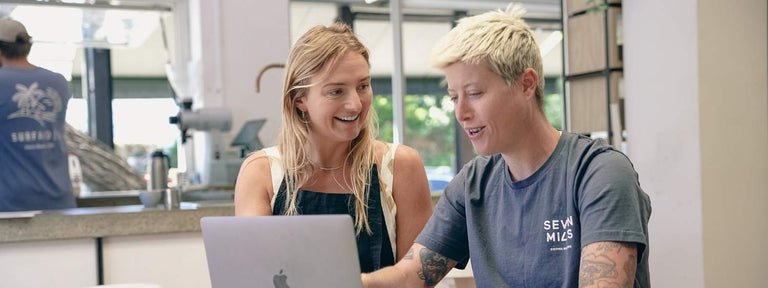
It's tempting to skip the business plan. "It's too much work", "Who's going to read it" are the type of comments we hear all the time.
In reality, the real benefit in putting together a business plan is less about the final document, and more about the process. The process of writing a business plan helps you really understand your local market and take a close look at the numbers you need to make the business successful.
A business plan will guide you through each stage of developing and managing your coffee shop, and will serve as a road map for how to structure, run, and grow your new business. Your business plan should include:
- A summary: What this business stands for, and how it's going to stand out.
- A local market analysis: Who are your regular customers? Who are your competitors?
- Your team: What are you going to do yourself, what team are you hiring to do the rest.
- A marketing plan: What is your point of difference? How are you going to communicate this?
- How much cash you need to get started and where it's coming from.
- Financial projections: Projected Profit & Loss, Cash Flow
- A location and lease strategy.
There’s a lot to think about, but taking time to plan for each of these aspects of your business will help set you up for success.
More Reading How to write a cafe business plan View Article4. Choose a Location
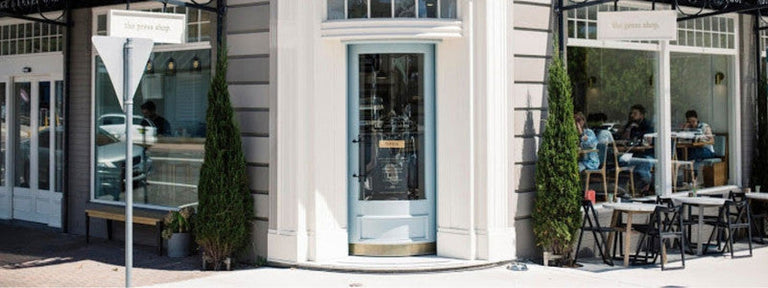
Location is critical to the overall success of any cafe business. Before you make a decision, spend some time in the areas you’re considering. Pay close attention to details like:
- How many people are moving about on foot?
- How much parking is available.
- Is the location visible enough?
- Is there enough foot traffic around to sustain your café
- What does the location mean in terms of demographics?
- What kind of things do the local community like to do?
Remember you’re going to be spending a lot of time here, so you want to make sure you really understand what makes the locals tick. It's also vital to understand the details of the retail lease, the terms of this document will affect the profitability and the resale value of your business down the track. It's wise to talk to a lawyer who specialises in retail leases before you sign anything.
More Reading Cafe location: The 7 things to look for. View Article5. Find the best suppliers

Finding good, reliable suppliers is a key component of any business success.
Depending on the type of café you're opening, the major suppliers are usually coffee, milk, bread, fresh produce and groceries. You’ll also need cups (paper and porcelain), napkins, coffee stirrers, teapots, syrups… the list goes on.
Start by making a list of all the supplies you need, being as detailed as you can. The list may seem overwhelming, but getting down to the nitty gritty (from pastries to napkin holders) will ensure you’re prepared for anything. From there, you can begin researching suppliers until you find ones you love and who fit with your business philosophy.
More Reading How much does wholesale coffee cost? View Article6. Source commercial equipment

When it comes to sourcing equipment, you have a few options. You can buy equipment outright using your own finance (or cash) or you can lease equipment through a provider like Silverchef or FlexiCommercial.
In the case of coffee equipment, many cafes are also able to get this on loan from their coffee roaster. It works a bit like a mobile phone plan.
You’ll also need to invest in a commercial blender, refrigerator, dishwasher, cash register… and so on.
Again, make a list and be as detailed as you can (download our checklist for a detailed list). You may not need all these items right away, so prioritise and keep in mind what’s coming.
More Reading The Barista’s Guide to the Best Commercial Espresso Machines View Article7. Design your café and give it character

The design of your café is crucial for drawing customers in and enticing them to return. The concept will largely depend on your target audience. Will it be modern? Retro? Sophisticated? Family-friendly? Health-focused?
Understand the tastes of your customer base and design your café with them in mind. Again, don’t try to please everyone; choosing one theme and sticking to it will make for a much stronger identity. Consider storefront design, signage, furniture and lighting. Evaluate the efficiency of the layout from both an employee and a customer perspective:
- Can the barista work methodically in the space allotted?
- Can your staff get quickly across the room?
- Will customers understand the ordering process upon entering your coffee shop?
I know it's expensive, but hiring a professional interior designer can really pull all this together. A great atmosphere and efficient workflow are critical, and an experienced designer can make all the difference.
8. Create a menu to complement your café
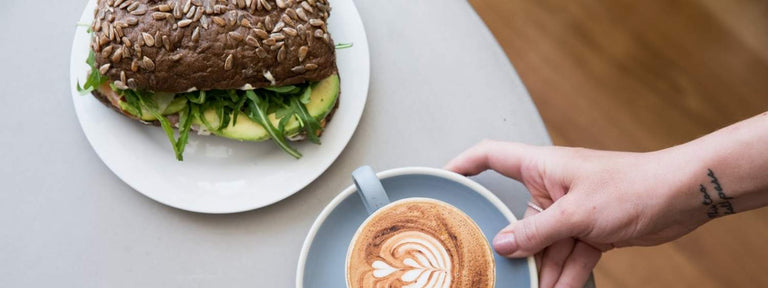
Your menu should express your vision and the theme of your café. Everything needs to be considered, from food options, to design, colour and fonts, to engaging descriptions, images and pricing.
Think about a signature dish and how that might shape the style of your menu. Keep it simple — one of the most common mistakes cafe owners make is trying to please everyone. This can leave you with dozens of items that are hardly ever ordered.
Focus on no more than 10-12 killer options that will knock everyone’s socks off, making sure to include gluten-free, vegan and vegetarian options.
Your menu also needs to be profitable. Calculate the ingredient costs and margin of each item. As a rough rule of thumb to get you started, the ingredient costs should be no more than 35% of the retail price (excluding tax).
More Reading 5 ways to improve cafe profit (without selling your soul) View Article9. Hire the right people
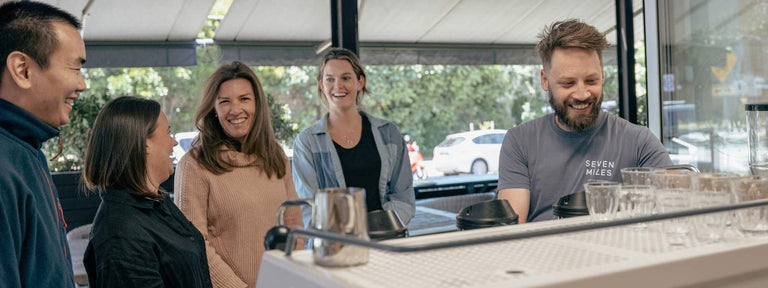
Ask any experienced cafe owner what the #1 issue in their business is - finding and keeping great staff.
Most people start by looking for experienced staff, which is understandable. But in my experience, there is one thing that trumps experience: attitude. Skills can be learned, attitude...not so much. Yes, you will need some some experience, particularly in the early stages. However, developing a great team culture only happens but hiring the right people, so make sure you out the work in to find people who are the best fit for your business.
A good induction and training system can help - we can help with barista skills & workflow training. When it comes time to hire, you will also need to be aware of the relevant award system, tax and other regulatory requirements.
10. Market your café

The weeks and months leading up to the opening of your cafe are a chance to start building your network. Social media will be your word of mouth, so use it to build up your reputation.
It's no secret that cafes love Instagram. It has become the platform to get the word out, but it doesn't stop there. Make sure you claim your Google Maps listing so that you show up in local search, and consider claiming your page on other review sites like Tripadvisor so that you can respond quickly to feedback.
Be sure to make online promotions personal, interactive and engaging. Use images and videos to encourage shares and engagement. When your customers come in, ask them to follow your page to receive updates, freebies and specials.
More Reading 12 Café Marketing Ideas (with examples) View Article11. Opening your café

Opening your café is an incredible achievement and will mark the beginning of an exciting new adventure.
After months (or years) of planning, preparation, and hiring the best staff possible, your ‘grand opening' is a chance to show off your hard work. It’s also a great opportunity to start building long-lasting relationships with your customers.
To hold a successful grand opening, start planning early. Make sure you have enough staff for the event and check for any other local events that might clash with yours. Consider having a ‘soft opening’ — allowing you to learn the basics before you open fully to the public. This is a great way to test staff, workflow, and the atmosphere of your coffee shop, and it also gives you the opportunity to iron out kinks before the big day.
With your shop open, you can enjoy the opportunity to be your own boss, build your profits and make new relationships throughout the community. And most importantly, you’ll enjoy sharing your passion for one of life’s greatest pleasures... coffee!
More Reading Buying a Cafe. The 6 things you need to know View Article
